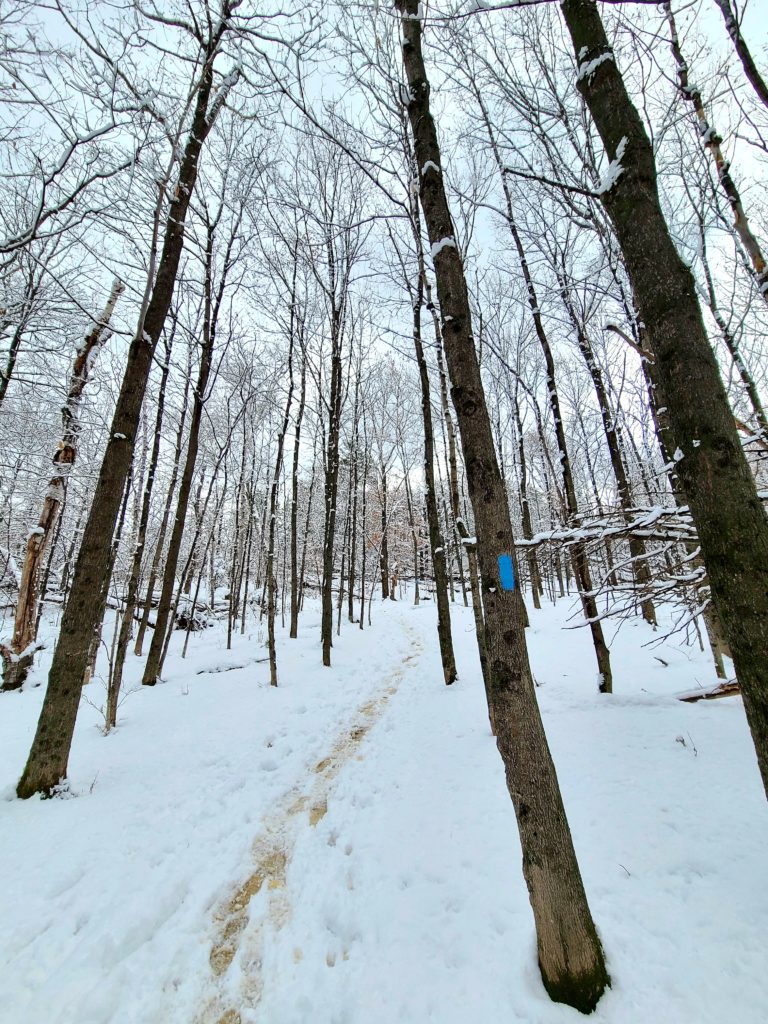Planning For Wise Winter Travel on the SHT
October 23, 2020
It’s starting to look like winter on the Superior Hiking Trail.

Don’t worry — we checked our calendars, and it’s still definitely, technically fall. But with a few inches of snow on the SHT already, now is a good time to start preparing for winter travel on the Trail.
Cold weather and snowy or icy trail conditions make it even more important to practice the first step of Leave No Trace — Plan ahead and Prepare — so that you can safely and responsibly enjoy the SHT.
Here are a few considerations as you plan for wise winter travel on the Trail:
- All trail rules still apply in the winter! Please stay on the Trail, leash and clean up after your pets, pack out what you pack in, camp only at designated campsites, and be respectful to fellow trail users.
- Set achievable goals. Even when the Trail is packed down well (thanks, snowshoers!), winter travel can be much slower and days are much shorter in the winter. Plan short trips until you know your pace and be sure to bring all the essentials in case something goes wrong. Check Trail Conditions and our COVID-19 page before you go, and report any trail problems you encounter using the form on the Trail Conditions page.
- Dress for the weather. Dontcha know it gets real cold up here in northern Minnesota — especially when the wind picks up. The Trail’s proximity to Lake Superior means weather conditions can change quickly and intensely. Check the forecast and wear layers so you can stay warm and comfortable in variable conditions.
- Don’t rely on digital devices. As helpful as digital maps and apps can be, cold weather drains phone and GPS batteries quickly. Always carry good ol’ reliable paper maps and guides. You can find our guidebooks and maps for the Trail in our online store.
- Stick to likely-plowed trailheads. A list of likely-plowed trailheads will be posted on the Trail Conditions page soon. (You can also find plowed trailheads in the SHT Databook.) State and city park trailheads tend to be the most quickly and consistently plowed, but know that conditions change rapidly. Pro tip: be respectful of laws regarding parking on the side of a road to avoid being ticketed, towed, or causing problems for neighbors of the Trail.
- Wear snowshoes or stay on well-packed trail to avoid postholing. Stay off groomed ski trails. Cross-country skiers have a short season for their sport, so please respect their trails by staying off where the SHT shares access with a ski trail. The rest of the SHT is not machine-groomed; it usually takes a couple days for the Trail to get packed down after a snow storm. Bonus points: Wearing snowshoes is a great way to navigate fresh snow and pack down the Trail for others. Be on the lookout for ice too — it’s never a bad idea to have traction devices handy.
- Protect the Trail by staying off of muddy tread and trailheads. At the beginning and end of the winter trail season, the freeze/thaw cycle can leave the tread of the SHT and many of our trailheads muddy and more susceptible to damage. Be mindful of your impact.
The silence, solitude, and stunning leaf-off views found on the SHT during the winter make it worthwhile to take these extra steps to ensure an enjoyable time on the Trail.
